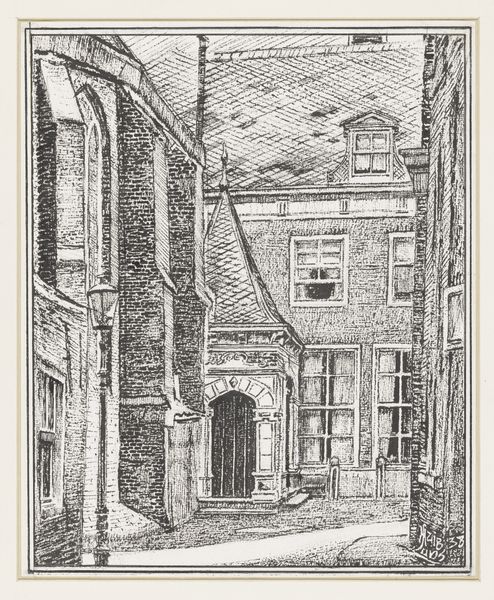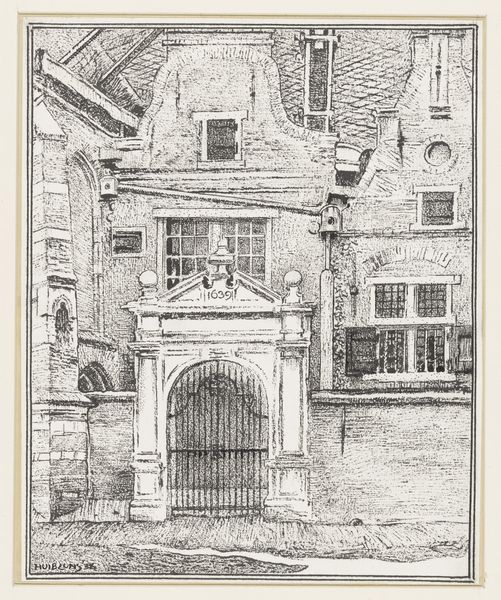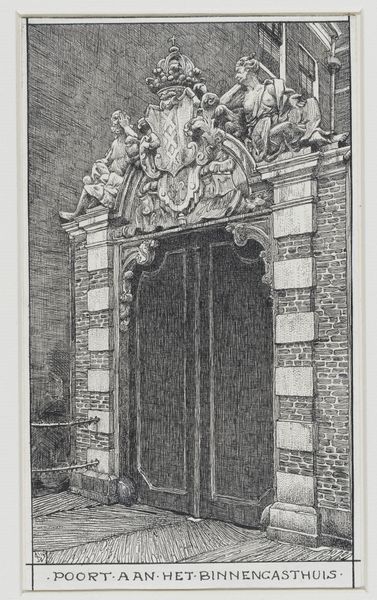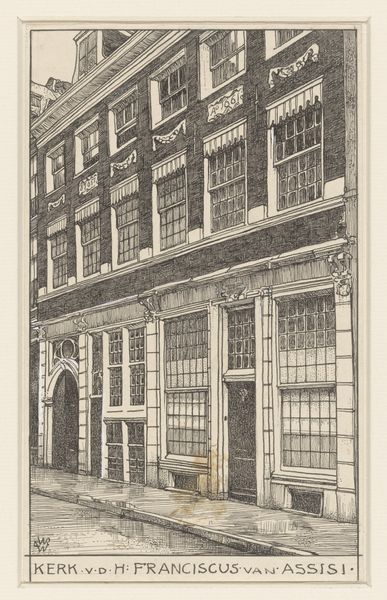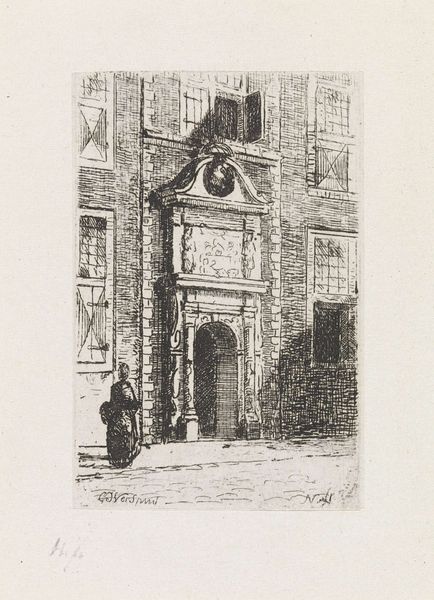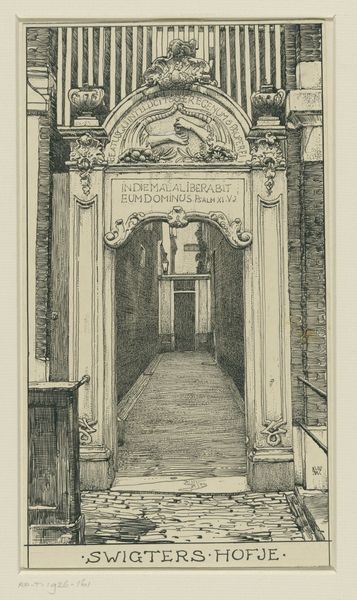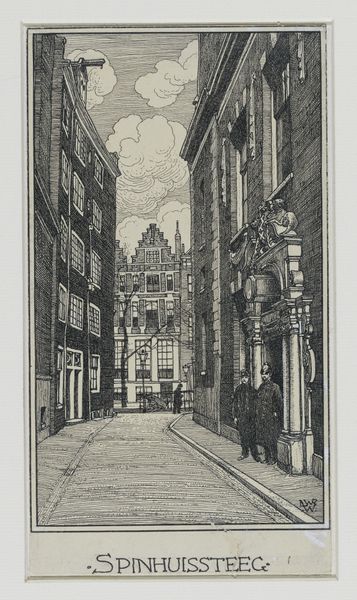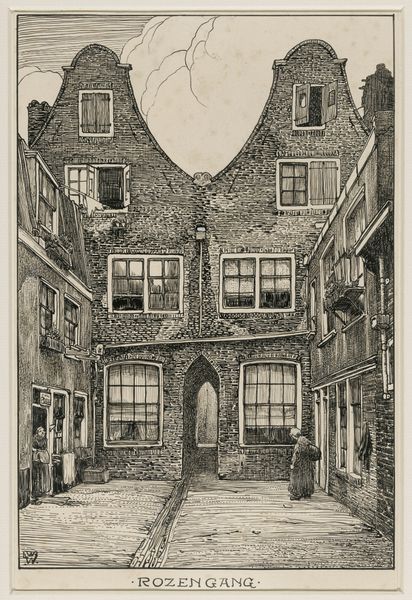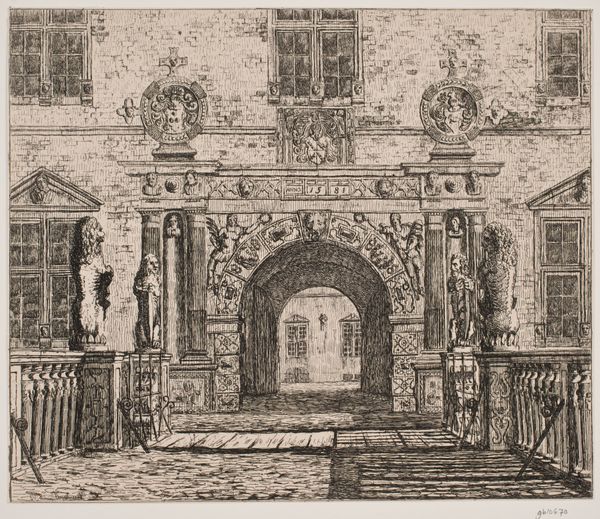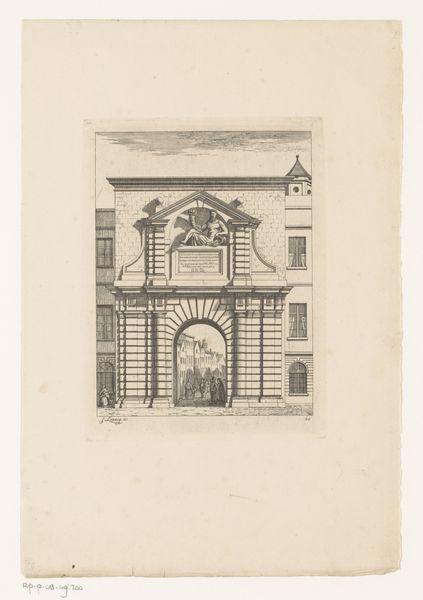
drawing, print, etching, ink, pen
#
drawing
#
dutch-golden-age
# print
#
etching
#
ink
#
pen-ink sketch
#
pen work
#
pen
#
cityscape
#
realism
Dimensions: height 188 mm, width 96 mm
Copyright: Rijks Museum: Open Domain
Curator: Willem Wenckebach's etching, "Ingang Burger Weeshuis te Amsterdam," created sometime between 1870 and 1926, depicts the entrance of the Amsterdam Civic Orphanage. The medium employed includes pen, ink, and etching. What are your initial impressions of this particular city view? Editor: Dark. Claustrophobic, even. I get this intense feeling of being drawn into a tunnel, maybe of no return. It's beautiful, of course, the linework is incredibly detailed, but overall, it leaves me a little uneasy. Like peering into history, but not in a romantic way. Curator: Indeed, the dense linework creates a rather oppressive atmosphere, guiding the eye relentlessly towards the vanishing point beyond the orphanage entrance. This rigorous application of hatching and cross-hatching establishes a clear hierarchy in the tonal range. Editor: Hierarchy, yes. The building almost looms, doesn't it? As if it's deliberately meant to be intimidating. Makes you wonder what went on behind those dark doors. All those carefully etched lines...I almost feel trapped by them. Curator: Note how Wenckebach employs the visual language of realism, albeit tinged with an almost dreamlike quality. This lends itself to considering not merely what is represented but how that representation signifies the architectural presence of civic order during that period. The strategic deployment of shadow enhances the overall feeling. Editor: Exactly! Like it’s a stage set. And look, someone is gazing out the window; I can almost hear faint laughter or desperate cries muffled by brick and stone. Realism it may be, but there is something decidedly unreal at play, too. Almost as though memory is etched in those lines. The light, too, seems odd. The scene could almost be taking place any time. Curator: This sense of timelessness invites further scrutiny into how we relate architectural forms and social memory. We must remember how formal elements invite discourse and not merely passively observe art. Editor: True. Now, walking away, though, I still feel unsettled but drawn in. This dark portal into old Amsterdam really makes me reflect on institutions – and how they impact our sense of self, maybe.
Comments
No comments
Be the first to comment and join the conversation on the ultimate creative platform.
